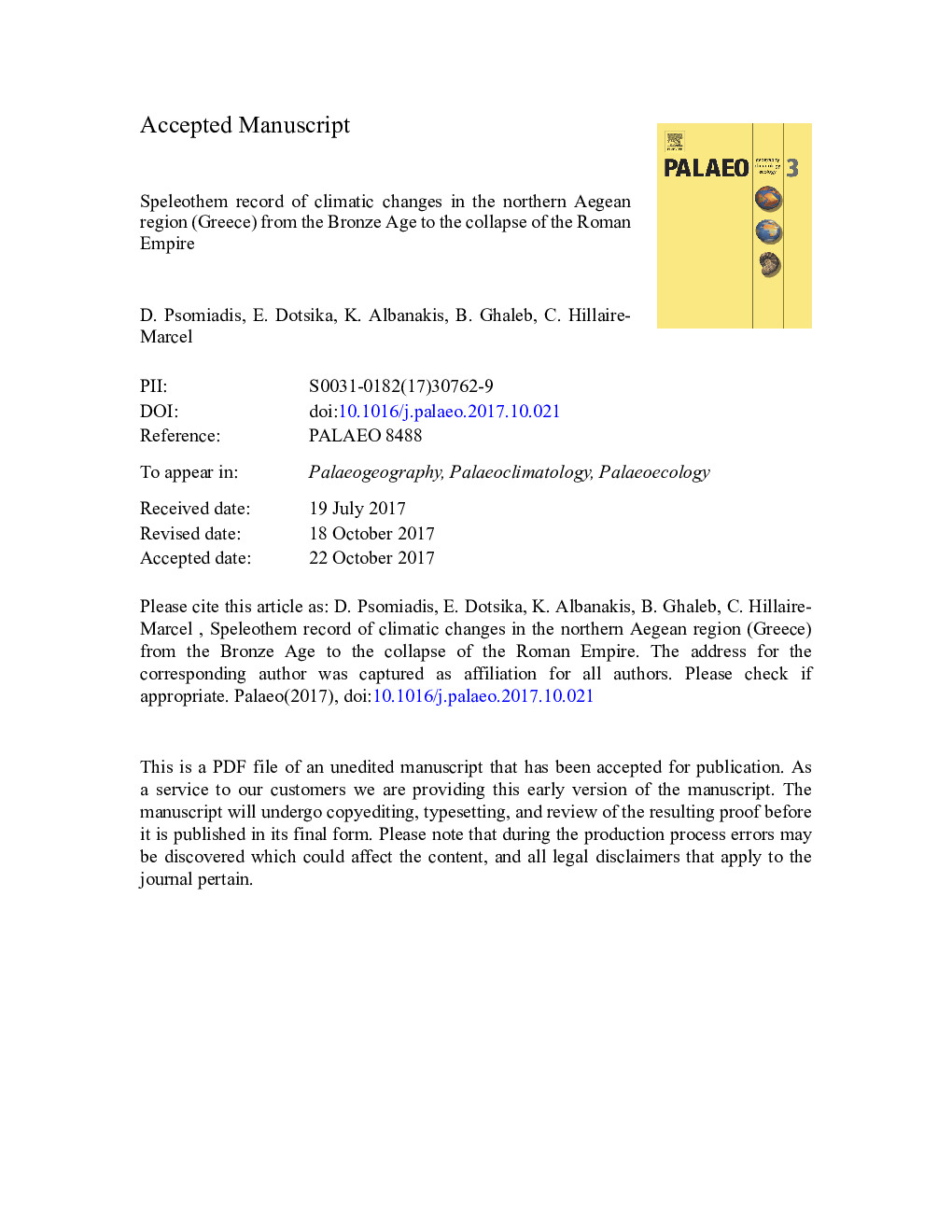| Article ID | Journal | Published Year | Pages | File Type |
|---|---|---|---|---|
| 8868518 | Palaeogeography, Palaeoclimatology, Palaeoecology | 2018 | 48 Pages |
Abstract
The climatic transitional zone of the northern Aegean Sea, potentially affected by different weather systems in the past, was the center of developed human societies that experienced rise and fall in the context of a few centuries. Interconnections of human occupation and climate shifts from the Bronze Age until the demise of the Roman Empire are investigated, based on the first high resolution isotope record of a stalagmite from northern Aegean region (Skala Marion Cave, Thassos Island, Greece). Fourteen U/Th dated layers tune precisely the isotope signal and provide distinct information of climate deterioration to drier conditions at 3900-3700, 3600-3400, 2600-2000 and after 1500Â yr BP. The intensity of the impact of these deteriorations on human societies is evaluated against archaeological data and in respect to the tolerance of the societies in the Bronze Age versus the Iron Age. Finally, it is evident that downscaling to local environments result in time discrepancies between the records which could only be addressed when the most robust and large amplitude oscillations have been identified.
Related Topics
Physical Sciences and Engineering
Earth and Planetary Sciences
Earth-Surface Processes
Authors
D. Psomiadis, E. Dotsika, K. Albanakis, B. Ghaleb, C. Hillaire-Marcel,
